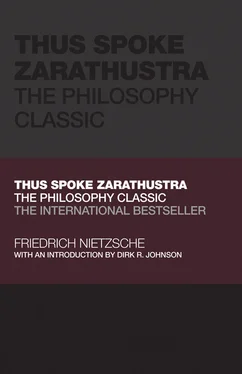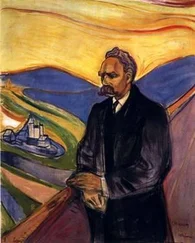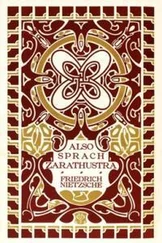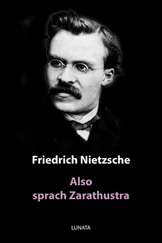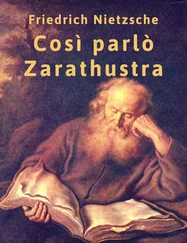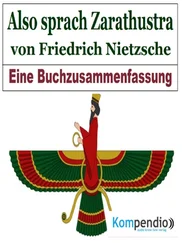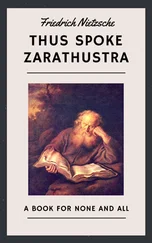Friedrich Nietzsche - Thus Spoke Zarathustra
Здесь есть возможность читать онлайн «Friedrich Nietzsche - Thus Spoke Zarathustra» — ознакомительный отрывок электронной книги совершенно бесплатно, а после прочтения отрывка купить полную версию. В некоторых случаях можно слушать аудио, скачать через торрент в формате fb2 и присутствует краткое содержание. Жанр: unrecognised, на английском языке. Описание произведения, (предисловие) а так же отзывы посетителей доступны на портале библиотеки ЛибКат.
- Название:Thus Spoke Zarathustra
- Автор:
- Жанр:
- Год:неизвестен
- ISBN:нет данных
- Рейтинг книги:5 / 5. Голосов: 1
-
Избранное:Добавить в избранное
- Отзывы:
-
Ваша оценка:
- 100
- 1
- 2
- 3
- 4
- 5
Thus Spoke Zarathustra: краткое содержание, описание и аннотация
Предлагаем к чтению аннотацию, описание, краткое содержание или предисловие (зависит от того, что написал сам автор книги «Thus Spoke Zarathustra»). Если вы не нашли необходимую информацию о книге — напишите в комментариях, мы постараемся отыскать её.
Thus Spoke Zarathustra: A Philosophy Classic, Thus Spoke Zarathustra: A Philosophy Classic
Thus Spoke Zarathustra — читать онлайн ознакомительный отрывок
Ниже представлен текст книги, разбитый по страницам. Система сохранения места последней прочитанной страницы, позволяет с удобством читать онлайн бесплатно книгу «Thus Spoke Zarathustra», без необходимости каждый раз заново искать на чём Вы остановились. Поставьте закладку, и сможете в любой момент перейти на страницу, на которой закончили чтение.
Интервал:
Закладка:
Nietzsche also began to examine specialized scientific treatises on physiology and biology, and other texts dealing with the wider natural sciences. Most of all, he was intrigued by literature emerging on the question of morality and human development. Darwin was the hidden reference point for these naturalist investigations.
His reading at the time reflects the two sides of Nietzsche's complex nature. On the one side he was drawn to the cultural tradition of ancient Greece as well as the cultural output of the West. Since his youth, he had dabbled in literary production, writing mocking sketches as well as drafts for plays. He was also well versed in the rich German musical tradition. He was an accomplished pianist, though his own compositions are not highly regarded today. (Later, he suggested that the entire Zarathustra should be considered music. 3 ) And throughout his life he wrote poetry. Having grown up in an intensely fertile cultural period, Nietzsche always harbored an ambition to make his mark on culture.
On the other side, there was a probing, scientifically inclined intellect that could get to the heart of the matter with incredible vigor and precision. This part of his nature was sharpened further by his rigorous philological studies, which trained him to parse ancient texts with a cool, analytical mind. Nietzsche's boundless curiosity also drew him to the advances in a wider range of academic disciplines, including the natural sciences. These gave him both a greater field of content as well as exposing him to new methods and insights into the areas that interested him most – above all, history, philosophy, religion, and the arts.
Despite having grown up in a religious household – his father was a Lutheran pastor – Nietzsche had come a long way from his childhood roots. Deciding early on to pursue an academic career in philology (displeasing his pious mother, who had wanted him to study theology), Nietzsche had taken gradual, though decisive, steps away from his Christian upbringing. He later claimed that his childhood faith had just slipped away, and he had encountered no struggle with it. It is an illuminating remark from a thinker whose masterpiece would initiate a radical break with Christianity.
CAMPAIGN AGAINST MORALITY
Nietzsche later stated that with the second book of his itinerant life, Daybreak (1881), he embarked on a campaign against morality. 4 All three books from those years – the latter text, along with the earlier Human, All‐Too‐Human (1878) and the subsequent The Gay Science (1882) – present bold new investigations into human history, culture, society, political life, and religion.
These works reveal traces of progressive Enlightenment thought. They explore humanity from a non‐religious, humanistic point of view. Nietzsche probed into the cultural rituals and behaviors of humankind and presented rational, naturalistic accounts for many of our practices and cultural institutions. In this period, Nietzsche employed the symbol of the free thinker to characterize his philosophizing.
DARWINIAN NATURALISM
Nietzsche started writing these works in the late 1870s. By that point, Charles Darwin's findings were already disseminated – The Origin of Species was published in 1859 – and had achieved widespread scientific acceptance in Germany.
It is clear from reading his texts of this period that naturalistic investigations into human history and development had influenced his thinking. Darwin's Descent of Man (1870), where Darwin applied his theory of evolution to man's moral development, gave Nietzsche additional context. He could now draw from a wider range of studies promoting Darwinian theories in relation to humankind.
But Nietzsche was beginning to introduce original perspectives that deviated from the theories of Darwin and others. Above all, he speculated on the specific question of morality and offered alternative hypotheses concerning its origins and dissemination. Instead of treating morality as a historical given, he had become interested in how belief in morality had arisen and how it had displaced other non‐moral perspectives. He speculated about what belief in morality could reveal about the individual who espoused it. This eventually led him to establish a dual history for morality: a master morality versus a slave morality.
Whereas the master morality adhered to values promoting health, vitality, and affirmation of life, slave morality looked with suspicion at examples of human thriving and excellence. It was an important distinction, which he explored further in his most influential post‐ Zarathustra work, the Genealogy of Morality (1887). Nietzsche's fundamental insight was that morality did not derive from a transcendent source, but was simply the product of a worldly power struggle.
Nietzsche's critical view of morality led him to suspect a literary tradition that had unquestioningly accepted the moral point of view as the only one. He also started to distrust the scientific rhetoric that was being applied to man and his place in nature. He believed it to be a rhetoric colored by an implicit moralism.
At this point, Nietzsche had reached a critical juncture: either to continue to write within a tradition he had intellectually undermined and which he felt to be spiritually bankrupt, or nihilistic – or to break free from the spiritual and linguistic stranglehold of the moral tradition.
It is here where the idea for Zarathustra came to him – or rather, as he later stated, it overtook him. 5
THE BIRTH OF ZARATHUSTRA
The main inspiration for Zarathustra was the thought of the “eternal return” – the idea that universe is cyclical and that everything that happens is destined to endlessly recur. Nietzsche claimed to have thrown the idea onto paper in Silvaplana, Switzerland, in August 1881 – “6,000 feet beyond people and time.” 6
Another inspiration was more earthbound: a young Russian woman named Lou Salomé, to whom he had been introduced in Rome in April 1882.
Nietzsche was intrigued by Salomé and began to court her. He aspired to win the intelligent young woman over to his philosophy, but Salomé proved to be too independent. The breakdown of their passionate friendship, by late 1882, precipitated a crisis in his family. His scheming sister Elisabeth had become jealous of Salomé and plotted against them.
Nietzsche was thrown into emotional turmoil. The affair had dashed his last hope for an intimate partnership. But it triggered an intense outpouring of his creative energies. Zarathustra was born in a series of short, inspired bursts each lasting ten days, according to Nietzsche. 7 The known facts concerning its composition bear out his claim.
PUBLICATION
Zarathustra is comprised of four parts and a prologue. Zarathustra I was published in August 1883 in a print run of 1,000 copies. 8 The book, and its subsequent parts, sold even more poorly than his previous works. He designated it a poetic work, and it departed in style and content from his earlier writings.
Before Zarathustra I was even published, Nietzsche was working on a second part. In the summer of 1883, during a three‐month stay in Sils, Nietzsche completed Zarathustra II within two weeks, in July 1883. He sent the manuscript to his publisher and received page proofs in September 1883. It too was printed in a run of 1,000 copies.
He was now busy at work on Zarathustra III . He completed the manuscript no later than January 1884, and it appeared in April, once again in a run of 1,000 copies. The design and format of all three volumes were the same – in blue card covers with red ink. The title page listed the book's title and publisher within a lined marginal border. The only distinction between volumes was the inclusion of a number to indicate the respective parts.
Читать дальшеИнтервал:
Закладка:
Похожие книги на «Thus Spoke Zarathustra»
Представляем Вашему вниманию похожие книги на «Thus Spoke Zarathustra» списком для выбора. Мы отобрали схожую по названию и смыслу литературу в надежде предоставить читателям больше вариантов отыскать новые, интересные, ещё непрочитанные произведения.
Обсуждение, отзывы о книге «Thus Spoke Zarathustra» и просто собственные мнения читателей. Оставьте ваши комментарии, напишите, что Вы думаете о произведении, его смысле или главных героях. Укажите что конкретно понравилось, а что нет, и почему Вы так считаете.
